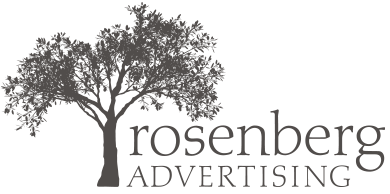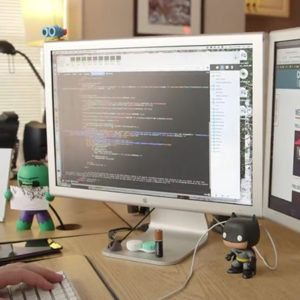Between an election, murder hornets, and oh yeah, a global pandemic, 2020 has certainly been one of the craziest years of our lifetime. And it’s no surprise that the craziness has impacted almost every industry, including our own. Let’s take a look at how things have shifted in the digital marketing space this year.
The year of digital everything
Ready for it or not, 2020 became the year of digital sales, events, and more. Businesses that had previously relied solely on foot traffic, out of home advertising, word of mouth, or in-person lead generation found themselves pivoting to digital marketing like never before. A digital presence not only became important… it became crucial to keeping their name out there and reaching their audience during a lockdown.
So, which tactics did companies either adopt or ramp up to drive their business forward?
The people stayed home… and they read their email
Email marketing has always been a good way to reach your audience, but in 2020 its power was amplified. This year, email has been one of the best ways to consistently communicate with your customers. Where social platforms and SEO strategies that drive traffic to your site are well-suited for reaching new prospects and grabbing attention, email is the tactic that enables you to nurture that attention.
The world’s population spent more time at home and, consequently, in their inbox. This enabled companies and organizations to send more emails without causing email fatigue.
The key was to carefully craft the messaging. When shutdowns started in March, it no longer made sense to send emails about going out or traveling. On the other hand, content about how to use a company’s products or services at home was met with positive engagement. But by May, if you were still sending emails about “these unprecedented times,” recipients were rolling their eyes. Savvy marketers needed to adjust quickly to the changing feelings of their audience segments and ditch that language across platforms, including email. Taking the temperature of the audience became a weekly task, instead of a monthly, quarterly, or even yearly endeavor.
Entertainment took a new form
TikTok, the app for music and dance challenges, turned mainstream this year as shutdowns around the world forced millions to stay indoors. Maybe it was boredom, a new wave of creativity, or a combination of the two that sparked a rise in users and, boom: TikTok became the most-downloaded app in the world.
This rapid growth was noticed by everyone, including the President. In August, his administration issued an executive order banning TikTok in the United States, stating that it was a national security threat. Multiple petitions, lawsuits, and temporary halts later, it has been set to be banned on multiple dates, all of which have come and gone with no action.
TikTok’s growth also caught the attention of Instagram, which launched its own short-form video feature called Reels. Some saw it as a smart solution to TikTok’s possible ban while others scrutinized the app for being a “TikTok clone.”
No one knows for sure what the future holds for TikTok, Reels, or the other copycat apps/in-app features that are sure to come along. That being said, there is one thing marketers should take way from all of this: short-form video is something everyone should be experimenting with.
In-the-moment content became king
The events in 2020 forced brands, and humankind in general, to become more authentic, vulnerable, and connected. In some cases, that meant sharing more than ever. “In-the-moment content” took precedence. Introduced by Snapchat, Stories have been integrated into other apps in past years, such as Instagram and Facebook. But in 2020, even more platforms joined the Stories train:
- LinkedIn “Stories” launched in October
- Twitter “Fleets” launched in November
- Spotify “Wrapped” launched in December – this has been around for multiple years but in 2020, it took a new form, showcasing users’ listening patterns in a Stories format
This shift has shown us that in-the-moment content is quickly becoming one of the most, if not the most, valuable form of content out there, forcing brands and marketers to think on the fly and exercise creativity in a new way.
The election got people talking… but some conversations were hard to find
As misinformation about the election began to float around the Internet, Facebook integrated a number of new security measures to reduce the spread and provide more transparency, including:
Post-election, Facebook indefinitely banned political ads in the US.
Similarly, leading up to the 2020 election, Instagram banned recent hashtags in the US. In fact, hashtags didn’t return for several weeks, sparking rumors that they would be phased out altogether until the feature was reactivated in mid-December.
For years, Google has been paring down on the data shown in their Keyword Planner, a tool that offers insight into how many people are searching for a particular topic. In 2020, terms relating to the election were removed. Similarly, Google removed autocomplete search suggestions that could possibly sway users to vote for one candidate over another.
It remains to be seen how these major platforms will provide (or not provide) data moving forward. Until then, it’s up to us to adapt and strategically work around these challenges.
Monopoly power discussions are looming…
And just when we thought the fun was over, the big tech hearings on “monopoly power” involving Google, Facebook, Amazon, and Apple have begun. Only time will tell what these proceedings will lead to, but it’s safe to assume there are more shifts on the horizon.
2020 brought some of the biggest changes our industry has ever seen, many of which are likely here to stay. It’s a lot to navigate, but we’re here to help. Contact us!
Looking for more 2020-related marketing content? Read about making your own marketing rules and resetting your budget during a pandemic. For some light-hearted reading, check out some of our current favorite things and ways to be productive while working from home.




